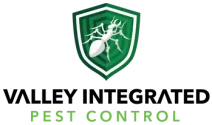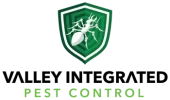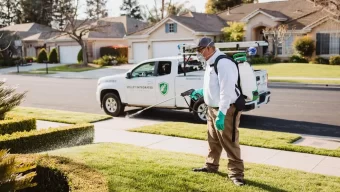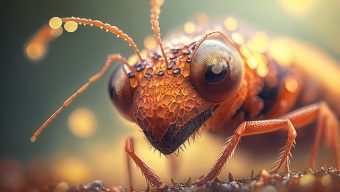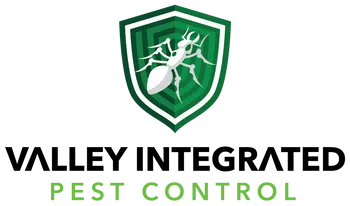ants control fresno
Contact us at Valley Integrated Pest Control for Fresno, CA Ant control! We are ready to get you started with a detailed inspection to determine what treatments are suitable for you and your property.
Fresno Ant Control Services
If you are looking for help with Fresno ant control services, you have come to the right place. If ants establish a colony in or around your Fresno home, ants can be a real pain. Ants will get inside your house in search of food and moisture. In addition to eating food that has been left out, some ant species, such as carpenter ants, will eat the wooden framework of your house.
Fresno typically has cold winters and hot, dry summers, yet because of this weather, ant infestations are a year-round concern. VIP Pest Control’s specialists are well qualified to keep ants from invading your property.

Best Ant Control Company in Fresno, CA
In the Fresno area, we have over 20 years of experience exterminating ant infestations. We can assist you if you are dealing with an ant infestation.
We quickly and efficiently eliminate ant infestations in your home, preventing them from returning and providing you with the peace of mind you need to relax in your own home.
First, our experts will conduct a pest inspection on your property, looking for potential entry points to determine the source of the problem. Then, using cutting-edge ant control techniques and solutions, our experts will exterminate the ant infestation.
We make certain that ants get out and stay out! Call VIP Pest Control today if you need a Fresno Ant Exterminator!
Types of Ants in Fresno, CA
There are a variety of different ants in Fresno that will plague your home at one time or another. The below information is a brief explanation of these pesky little creatures and how VIP Pest Control deals with each of the various types.

Argentine Ants
The Argentine ant is a species of ant found in Argentina, Uruguay, Paraguay, Bolivia, and southern Brazil, but it is one of the most common species found in Fresno and throughout the Central Valley.
These ants will make nests in the ground, in cracks in concrete walls, in the spaces between boards and timbers, and even in things that people own.
Because they can’t dig deeper, they usually build their nests in shallow areas with loose leaf litter or under small stones in the wild. Argentine ant colonies will take over other nests if another colony leaves.
Argentine ant colonies almost always have a large number of reproductive queens, up to eight for every 1,000 workers. Queens rarely, if ever, disperse in winged form. Colonies instead reproduce by budding off into new units. A new colony can be established a single queen and as little as 10 worker ants.
The low season happens in mid-winter, when 90% of a representative colony is made up of workers and the remaining queens, and there is no reproductive activity or birthing. In late winter, eggs are laid, and nearly all of them hatch into sexual forms by May. Mating takes place after the females emerge. Worker production rises steadily from mid-March to October, after which their numbers fall steadily over the winter months because they are not replenished.
Colonies of interspecific and infraspecific rivals keep colonies in the Argentine ant’s native habitat within a range of ten to one hundred meters.
The colonies appear to form fluctuating territory borders as they expand, contracting and expanding on a seasonal and conditional basis.
In the summer, there is an expansive push outward, and in the winter, there is a retreating motion. This is due to soil moisture and temperature fluctuations.
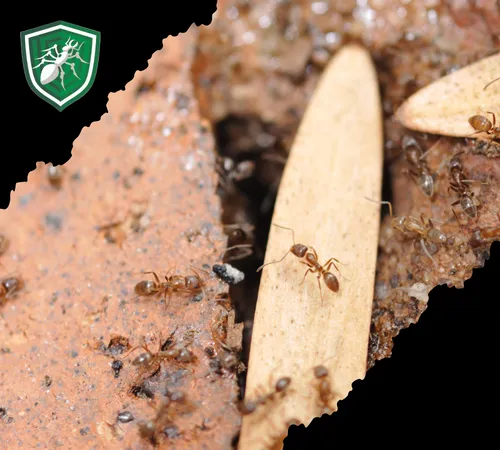
Odorous House Ant
The odorous ant is a small ant that is also known as the sugar ant, stink ant, and coconut ant. Their colonies are made up of several nests and have multiple reproducing queens. Odorous ants, like many social insects, have complex foraging strategies, allocate food based on environmental conditions, and compete with other insect species.
Odorous Ant Environment
These ants can be found in a wide range of environments, including homes. They primarily forage for honeydew, which is produced by aphids and scale insects that the ants guard and care for, as well as floral nectar and other sugary foods. They are common household pests in Fresno and the Central Valley, attracted to water and sweets.
This odorous house ant is tough, and injured workers have been observed to live and work with little difficulty. Some queens with crushed abdomens continue to lay eggs, and there have been documented cases of queens surviving for more than two months without food or water. They also appear to be heat and cold tolerant. These ants are difficult to get rid of in the house.
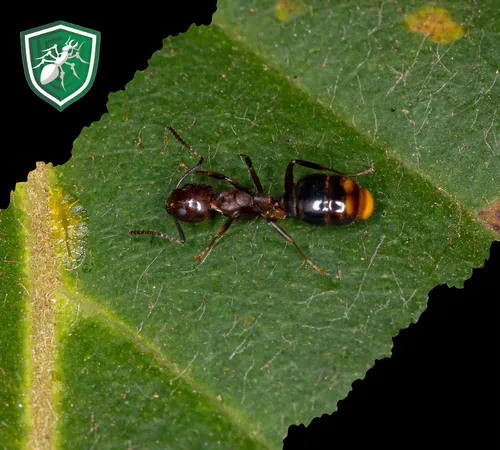
What Do Odorous Ants Eat?
This indicates that more people are eating, but they are eating less. When the number of donors was doubled and the overall population size increased, the number of people receiving food more than doubled, indicating that the number of people fed increased but the per capita amount of food consumed decreased.
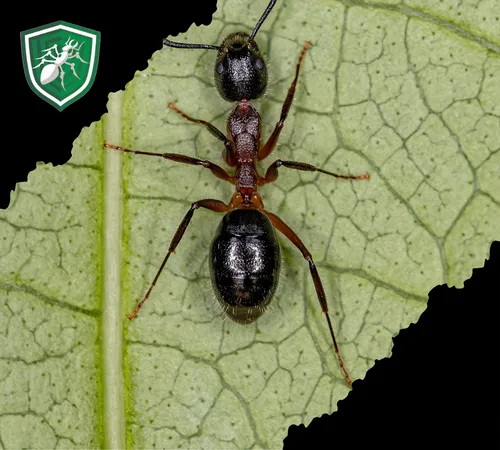
Sugar and protein are preferred food sources by ants over lipids, and this preference is not seasonal. When given specific sugar sources, ants preferred sucrose over other sugars such as fructose and glucose.
The colony will stay in a single nest during the winter time and then form multiple nests during the spring and summer when resources are more abundant. This allows them to make better use of food sources that may be dispersed.
This ant is a scavenger/predator that eats most household foods, particularly those containing sugar, as well as other insects. They tend to colonize near heat sources or in insulation indoors.
WHERE DO ODOROUS ANTS LIVE?
Nests have been discovered in house plants and even toilet lids in hot and dry conditions. They prefer to colonize under rocks and exposed soil when left to their own devices. They do, however, appear to form colonies almost anywhere and under a variety of conditions.
They appear to be more likely to infiltrate homes following rain (which washes away the honeydew they collect).
NO MATTER WHAT TYPE OF ANT ISSUE YOU ARE HAVING IN YOUR HOME, USE A TRUSTED ANT CONTROL SPECIALIST IN FRESNO, LIKE VIP PEST CONTROL, TO GET THE JOB DONE.
CARPENTER ANTS
Carpenter ants are large ants that are common throughout the Central Valley. They build nests inside wood, preferably in dead, damp wood, using galleries chewed out with their mandibles. Unlike termites, they do not consume the wood.
WHERE DO CARPENTER ANTS LIVE?
The black carpenter ant is one of the most well-known species associated with human habitation in the Central Valley. Carpenter ant species can be found both outside and inside moist, decaying, or hollow wood, most commonly in forest environments. They carved “galleries” into the wood grain to provide passageways between sections of the nest.
Carpenter ants are more likely to infest certain areas of a house, such as around and under windows, roof eaves, decks, and porches, because these areas are most susceptible to moisture.
Carpenter ants have been observed building extensive underground tunneling systems. These systems frequently end at a food source, which is usually an aphid colony where the ants extract and feed on honeydew. These tunneling systems are also common in trees. A central “parent” colony is usually surrounded and supplemented by smaller satellite colonies.

WHAT DO CARPENTER ANTS EAT?
Carpenter ants are predators as well as scavengers. These ants forage for parts of other dead insects or substances derived from other insects. Insect parts, “honeydew” produced by aphids, and extrafloral nectar from plants are common foods for them. They are also known to consume other sugary liquids like honey, syrup, or juice. Carpenter ants can improve aphid survival by tending to them. They tend to eat a variety of aphid species but can also show a preference for certain ones.

WHAT TIME OF THE DAY ARE CARPENTER ANTS MOST ACTIVE?
The majority of carpenter ant species forage at night. They typically collect and consume dead insects while foraging. Some species collect live insects less frequently. When they find a dead insect, they surround it and extract its bodily fluids, which are then carried back to the nest.
The remaining chitin-based shell remains. The ants will occasionally bring the insect’s chitinous head back to the nest, where they will extract its inner tissue.
WHAT IS THE ROLE OF THE WORKER ANTS?
When workers discover food sources, they share this information with the rest of the nest. They use biochemical pheromones to determine the shortest path from the nest to the source. When a large number of workers follow this trail, the cue’s strength increases, and a foraging trail is formed.
This will come to an end when the food supply is gone. The worker ants will then give food to the queen and larvae by eating the food they have discovered and regurgitating it at the nest. Foraging trails can be either underground or above ground.
Although carpenter ants are not usually aggressive, they have developed mechanisms to maximize their provision from a food source when a competing organism visits that same food source.

More often than not, they devise a systemic approach to visiting the food source, alternating trips by different individual ants or groups. This enables them to reduce intruder gains because intruders typically try to visit in a scattered, random, and unorganized manner.
The ants, on the other hand, visit the sources in a systematic manner, lowering the mean standing crop. The more systematic the ants’ foraging behavior, the more random its competitors’.
Carpenter ants, despite their name, can not eat wood because they can’t digest cellulose. They only dig tunnels and build nests within it.
Carpenter ants can wreak havoc on wood used in building construction. They will leave behind a sawdust-like material, which can lead to the location of their nest. Carpenter ant galleries are smooth, unlike termite-damaged areas, which have mud packed into the hollowed-out areas.
Control involves the use of insecticides in a variety of forms, including dusts and liquids. The dusts are injected directly into the carpenter ant galleries and voids. The liquids are sprayed in areas where foraging ants are likely to pick up the poison and bring it back to the colony.
BEST ANT CONTROL COMPANY IN FRESNO, CA
 Ant control in Fresno, CA is more effective when an unwelcoming environment is created for these creatures. It’s best to prevent an ant infestation from starting, but how?
Ant control in Fresno, CA is more effective when an unwelcoming environment is created for these creatures. It’s best to prevent an ant infestation from starting, but how?
Here are a few suggestions for keeping ants from nesting on your property and wreaking havoc on your home or business:
- Outdoor branches and shrubbery should be pruned. Cutting back all of the branches and shrubbery that come into contact with the exterior of your home can prevent ants from nesting. Ants use these elements to get around your home’s treated perimeter.
- Mulch sparingly. It is recommended that mulch be kept at least three inches away from your home.
- Don’t leave tree stumps or wood lying around. Ants can be attracted to tree stumps or any decaying wood. Avoid any situations in which wood is in direct contact with the ground or is adjacent to your home. Keep an eye on wood decay and replace damaged wood as needed.
- Maintain a clean kitchen area. Ants can be deterred by keeping your kitchen surfaces and your pet’s food bowl clean, as well as wiping up spills immediately.
- Monitor indoor humidity and install an effective outdoor water drainage system. Certain ants, most notably carpenter ants, are drawn to water and damp wood.
- Remove any debris. Remove debris piles such as leaves, firewood, and bricks; do not store firewood directly on the ground or too close to your home.
- Take careful note of your plants. Control plant lice and aphids on your favorite shrubs, such as rose bushes, peonies, and maples.
MOST COMMON QUESTIONS ABOUT
ANT CONTROL IN FRESNO
Ants enter your house in search of food, water, and shelter. They are attracted to sugary, greasy, or protein-rich substances in your kitchen or other areas of your house.
You can get rid of ants in your house by using baits, insecticides, or natural remedies like vinegar, cinnamon, or peppermint oil. It’s important to eliminate the ant’s food sources and seal off entry points to prevent them from returning.
There are many different species of ants that can be found in homes, including odorous house ants, pavement ants, carpenter ants, and pharaoh ants. Identifying the species of ant can help determine the most effective method for getting rid of them.
Most ants in the house are not dangerous, but some can bite or sting, causing discomfort and allergic reactions in some people. Carpenter ants can also cause structural damage to your home if left untreated.
To prevent ants from entering your house, make sure to keep your kitchen clean and free of crumbs and spills, seal off entry points, and store food in airtight containers. Regularly checking your home’s exterior for cracks or gaps can also help keep ants from finding their way in..
Not necessarily. A few ants in the house can simply mean that they are foraging for food. However, if you consistently see large numbers of ants or multiple ant trails, this could indicate an infestation that requires professional pest control.
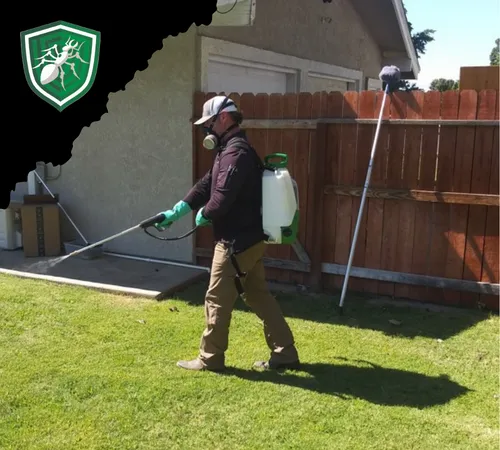
CALL VALLEY INTEGRATED PEST CONTROL FOR ALL OF YOUR ANT CONTROL NEEDS IN FRESNO, CA! 559-307-0612
Valley Integrated Pest Control can also help you with the following pest control problems: mice control in Fresno, rat control in Fresno, spider control in Fresno, flea & tick control in Fresno, Wasp Pest Control in Fresno, Cockroach Extermination in Fresno.
read our Pest Control reviews
Why We're the Right Choice:

We value our clients

Affordable Service Prices

Best Knowledge & Equipment in the Industry

